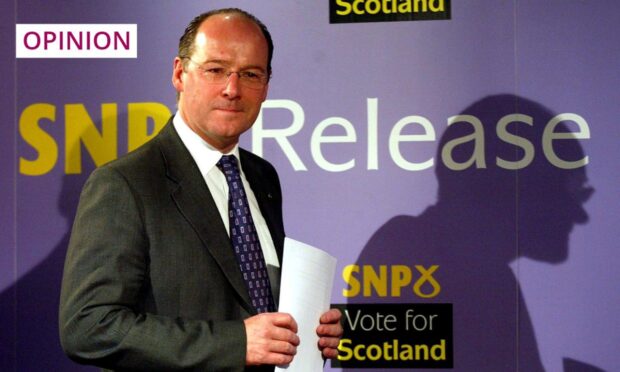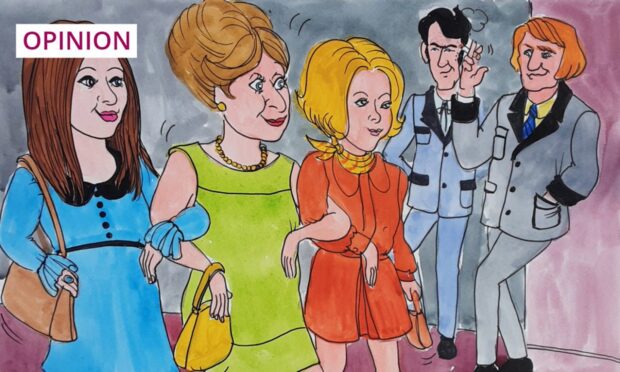As a political journalist, it was always helpful to be on friendly terms with political mavericks. These were politicians who did not always toe the party line and were often happy to impart their views on where their colleagues were going wrong.
A good example of this free-thinking was Tam Dalyell, the late Labour MP for West Lothian. He was in parliament for 43 years, and a thorn in the flesh of just about every prime minister over that period, including those of his own party.
He raised important questions over the sinking of the Belgrano during the Falklands War, opposed the Gulf War of 1990 and the later Iraq invasion. And he was a constant seeker of the truth behind the Lockerbie bombing. His autobiography, published in 2012, was appropriately titled The Importance of Being Awkward.
As someone who covered Lockerbie, and the subsequent attempts to discover the perpetrators, I would often call Tam for his opinion when I’d been given a lead on a new development in the investigation. His contacts in the murky world of intelligence were unrivalled, and he could frequently confirm or deny the veracity of a story which I’d heard.
Sadly, since the Scottish parliament was established, Holyrood has seen few characters like Tam. The SNP in particular was known for its strict discipline at Holyrood during the first couple of decades, with virtually no one stepping out of line on party policy. That, of course, was in the days when the party made its own policies, rather than adopting those of a coalition partner.
Happily for journalists, and indeed for the governance of the country, that iron discipline appears to be breaking down, not just in the SNP but in other parties, too.

One of the most impressive sights in parliament in recent weeks came when former cabinet minister Fergus Ewing ripped up the consultation document on Highly Protected Marine Areas. Many of his own colleagues were aghast at this rebellion against policy, though he was not alone in his opposition to the proposal. Kate Forbes, who narrowly missed out on becoming party leader, also spoke out against the plan, and is widely believed to have refused a cabinet post because of it.
Just a few days after Mr Ewing’s gesture, the government bowed to the inevitable and scrapped the proposal.
His act of defiance is not the only crack in the previous iron discipline for which the SNP had become famous. MP Stewart McDonald has published a pamphlet bluntly stating that a “de facto” referendum, supported and promoted by the party leadership would be unworkable and would simply set back the cause of Scottish independence.
A smattering of rebellion is good for governance
Factions within parties have always existed, from the Wilson-Gaitskell and Blair-Brown rivalries in Labour, to the European Reform Group in the Conservatives. These are groupings of like-minded politicians, rather than political mavericks, though they can also have a beneficial effect on political discourse.
In Holyrood, until recently, we’ve seen little evidence of individuality. But, in addition to Mr Ewing’s rebellion on the government benches, there’s been bloodletting on the Conservative side, with the sacking from the front bench of Jamie Greene. He claims he was dismissed as justice spokesman for supporting the Scottish Government’s gender reforms, despite the fact that the Tories gave their MSPs a free vote on the issue.
The emergence of rebel MSPs is a good sign. It may be more of a trickle than a flood so far, but it has hopefully set a precedent. Party leaders and party whips may not like it, but a smattering of rebellion in the ranks is inevitably good for governance.
In the SNP, we only have to look back to the early 1980s and the expulsion of the 79 Group. Many of them, including a young Alex Salmond, were later to reinvigorate the party and lead it to government.
There are currently reports of a loosely aligned group of 15 or so SNP MSPs who were opposed not only to the marine area proposals, but also to the bottle return scheme and the gender recognition plans. All of these proposals are policies promoted principally by the Greens, and two of them have already been kicked into the long grass. This is good news, and has resulted in a positive outcome for governance already.
The emergence of an “awkward squad”, as Tam Dalyell described it, may not be welcome to party leaderships, but it is certainly positive for parliament and the electorate.
Campbell Gunn is a retired political editor who served as special adviser to two first ministers of Scotland, and a Munro compleatist











